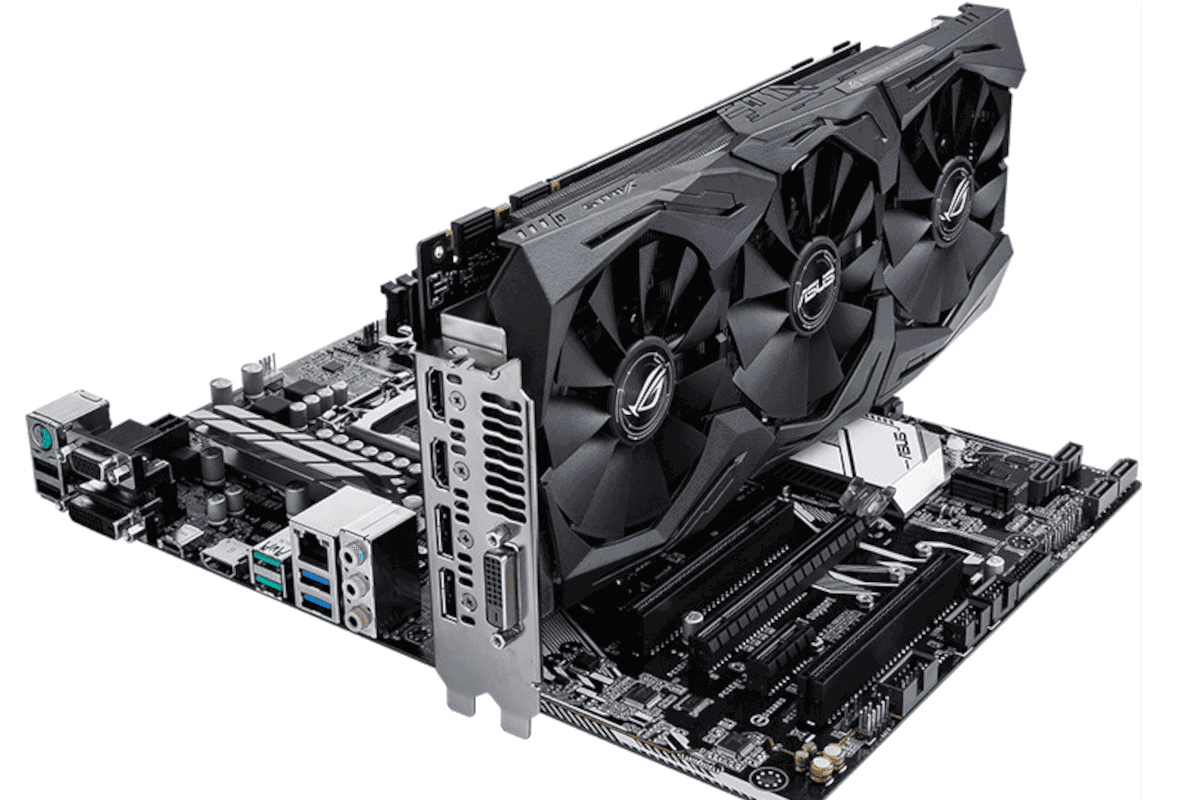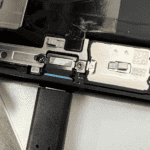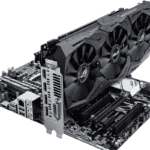GPU memory plays a crucial role in your computer’s performance. When it fills up, your system can slow down or even crash. Clearing GPU memory can boost your graphics card’s performance and prevent issues. This simple task often gets overlooked but can make a big difference.
You might wonder why GPU memory needs clearing. Over time, data from closed programs can linger, taking up valuable space. This leaves less room for current tasks, potentially hampering your system’s speed and stability. Regular memory clearing helps keep your GPU running smoothly.
Let’s explore some quick and easy ways to clear your GPU memory. These methods can help you maintain optimal performance without needing technical expertise. We’ll cover both manual and automated approaches to suit different skill levels and preferences.
| Method | Difficulty | Time Required |
|---|---|---|
| Task Manager | Easy | 1-2 minutes |
| GPU Reset | Medium | 2-5 minutes |
| Driver Update | Easy | 5-10 minutes |
Understanding GPU Memory and Its Impact on Performance
GPU memory plays a crucial role in graphics processing and overall system performance. It affects how smoothly games run and how quickly complex visual tasks are completed.
The Role of GPU Memory in Graphics Processing
GPU memory, also known as VRAM, stores textures, models, and other graphical data for quick access. This dedicated memory allows the GPU to process visual information rapidly without relying on slower system RAM.
VRAM capacity influences the resolution and detail levels you can run in games and applications. More VRAM lets you use higher-quality textures and render more complex scenes.
Different GPU tasks require varying amounts of memory:
- 3D rendering: High VRAM usage
- Video editing: Moderate to high usage
- 2D graphics: Lower usage
Common Issues Affecting GPU Memory Usage
Memory leaks can gradually consume available VRAM, leading to performance drops over time. These often occur due to poorly optimized software or driver issues.
Excessive background processes may use up GPU resources. Close unnecessary programs to free up memory for your main tasks.
Running games or applications beyond your GPU’s capabilities can cause memory overload. Adjust graphics settings to match your hardware’s limits.
Signs of GPU Memory Overload
Watch for these indicators of VRAM exhaustion:
- Stuttering or frame rate drops in games
- Slow rendering times in creative applications
- Reduced overall system performance
- Graphical glitches or texture pop-in
Use monitoring tools to track GPU memory usage. If you consistently hit the limit, consider upgrading your graphics card or optimizing your workflow.
| VRAM Capacity | Typical Use Cases |
|---|---|
| 2-4 GB | Basic gaming, office work |
| 6-8 GB | 1080p gaming, light content creation |
| 8-12 GB | 1440p gaming, video editing |
| 16+ GB | 4K gaming, professional 3D work |
Monitoring and Managing GPU Resources
Effective GPU resource management involves tracking memory usage and optimizing performance. Tools and techniques help users understand their GPU’s workload and make informed decisions about upgrades or optimizations.
Using Task Manager and Third-Party Tools
Windows Task Manager provides basic GPU monitoring capabilities. To access it, right-click the taskbar and select “Task Manager.” Navigate to the “Performance” tab and click on “GPU” to view usage stats.
For more detailed analysis, third-party tools offer advanced features. MSI Afterburner is popular among gamers and enthusiasts. It displays real-time information on GPU clock speeds, temperature, and memory usage.
GPU-Z is another useful tool. It provides in-depth hardware information and monitoring capabilities. These applications help you track VRAM usage and identify resource-hungry processes.
Interpreting GPU Usage Data
Understanding GPU usage data is crucial for optimizing performance. Pay attention to memory utilization, which shows how much VRAM your applications are using.
High memory usage (over 90%) can lead to performance issues. If you notice consistent high usage, consider closing unnecessary applications or upgrading your GPU.
GPU core utilization indicates how hard your graphics card is working. Sustained high utilization might mean your GPU is struggling to keep up with demands.
| Metric | Normal Range | Potential Issue |
|---|---|---|
| Memory Usage | 50-80% | >90% |
| Core Utilization | 60-80% | >95% consistently |
| Temperature | 60-80°C | >85°C |
When to Optimize or Upgrade GPU Memory
If you frequently encounter high memory usage or performance issues, it’s time to consider optimization or upgrades. Start by closing memory-hungry applications and unnecessary background processes.
Updating your graphics drivers can also improve memory management. Check your GPU manufacturer’s website for the latest versions.
When optimization isn’t enough, upgrading your GPU might be necessary. Consider an upgrade if:
- You can’t run newer games or applications smoothly
- You’re consistently maxing out VRAM usage
- You need to lower graphics settings to maintain performance
Research GPUs with more VRAM and better performance metrics that fit your budget and system requirements.
Practical Steps to Free Up GPU Memory
Clearing your GPU memory can significantly improve system performance. These techniques will help you optimize your graphics card’s resources and enhance overall functionality.
Clearing VRAM on Windows 10
To clear GPU memory on Windows 10, start by restarting your computer. This simple step terminates all running processes and gives your GPU a fresh start. If a restart doesn’t suffice, try these methods:
- Close unnecessary programs
- End resource-intensive tasks
- Update graphics drivers
Open Task Manager by pressing Ctrl+Shift+Esc. Navigate to the Performance tab and select GPU 0. This shows which applications are using your GPU memory and how much.
For a more thorough cleanup, use the Windows DirectX Diagnostic Tool:
- Press Windows key + R
- Type “dxdiag” and press Enter
- Go to the Display tab
- Click “Reset” under DirectX Features
Adjusting Graphics Settings for Better Performance
Optimizing your graphics settings can free up GPU memory and boost performance:
- Lower resolution: Reduce screen resolution in Windows display settings
- Decrease texture quality: Adjust in-game graphics options
- Limit frame rate: Cap FPS to reduce GPU load
- Disable V-Sync: Turn off in graphics control panel or game settings
| Setting | Effect on Performance | Memory Impact |
|---|---|---|
| Resolution | High impact | Significant |
| Texture Quality | Moderate impact | Moderate |
| Frame Rate | Variable impact | Low to Moderate |
| V-Sync | Low impact | Low |
Consider using graphics optimization software like GeForce Experience or AMD Radeon Software to automatically adjust settings for your hardware.
Managing Background Applications and Processes
Controlling background activities is crucial for freeing up GPU memory:
- Use Task Manager to identify GPU-intensive processes
- Close unnecessary browser tabs and applications
- Disable startup programs that use GPU resources
- Uninstall unused programs that may run in the background
For more control:
- Open Task Manager
- Go to the Startup tab
- Disable programs that don’t need to launch at startup
Consider using a lightweight antivirus and avoiding resource-heavy desktop widgets or live wallpapers. These small changes can have a big impact on your GPU’s memory usage and overall system performance.
Advanced Techniques for Optimal GPU Performance
Maximizing your GPU’s potential requires a combination of hardware tweaks and software optimizations. These advanced methods can significantly boost performance for demanding tasks.
Overclocking and Fine-Tuning GPU Settings
Overclocking pushes your GPU beyond factory settings for enhanced performance. Start by using reputable software like MSI Afterburner or EVGA Precision X. Gradually increase core clock and memory clock speeds in small increments.
Monitor temperatures closely. Aim to keep your GPU under 80°C during stress tests. Adjust fan curves to maintain safe temperatures.
Fine-tune power limits to allow your GPU to draw more power when needed. This can stabilize higher clock speeds.
Be cautious with voltage adjustments. Small increases may help stability but carry more risk.
| Setting | Safe Starting Increment | Max Recommended Increase |
|---|---|---|
| Core Clock | +25 MHz | +150 MHz |
| Memory Clock | +50 MHz | +500 MHz |
| Power Limit | +5% | +15% |
Always test stability with benchmarks after each adjustment. Revert changes if you encounter crashes or artifacts.
Updating and Managing Graphics Drivers
Keep your graphics drivers up to date for optimal performance and compatibility. Visit your GPU manufacturer’s website regularly for the latest versions.
Use DDU (Display Driver Uninstaller) to completely remove old drivers before installing updates. This prevents conflicts and ensures a clean installation.
Consider using beta drivers for the newest games. They often include optimizations for recent releases.
Customize your GPU settings in the control panel:
- Set “Power Management Mode” to “Prefer Maximum Performance”
- Enable “Threaded Optimization” for better CPU utilization
- Adjust “Texture Filtering Quality” based on your preferences
Disable unnecessary background processes in Task Manager to free up resources for your GPU.
Optimizing for Specific Applications like Gaming or Video Editing
For gaming, focus on in-game settings that impact performance most:
- Lower shadow quality for a significant FPS boost
- Reduce anti-aliasing levels
- Decrease texture resolution if VRAM is limited
Use game-specific optimizers like GeForce Experience or AMD Gaming Evolved to quickly apply balanced settings.
For video editing, prioritize GPU acceleration in your software settings. In Adobe Premiere Pro, enable GPU acceleration in project settings.
Allocate more VRAM to your editing software if available. This improves preview rendering and export times.
Consider using proxy files for smoother editing of high-resolution footage. This reduces strain on your GPU during the editing process.
Frequently Asked Questions
Clearing GPU memory is essential for optimal performance across different operating systems and applications. The following questions address common scenarios and provide practical solutions.
What are the steps to release memory on a GPU in Windows 11?
To clear GPU memory in Windows 11, start by restarting your computer. This simple action often resolves memory issues quickly.
If a restart doesn’t help, use Task Manager. Press Ctrl+Shift+Esc, go to the Performance tab, and select GPU 0. You’ll see which applications are using GPU memory.
Close memory-intensive programs through Task Manager. Right-click on the application and select “End task” to free up GPU resources.
How can I free up GPU memory on a Linux system?
On Linux, you can use command-line tools to monitor and clear GPU memory. Open a terminal and use the ‘nvidia-smi’ command for NVIDIA GPUs to view memory usage.
To free up memory, identify resource-heavy processes and terminate them using the ‘kill’ command. Alternatively, restart the X server or reboot the system for a complete memory flush.
What is the method to reset a GPU’s memory in Python applications?
In Python, you can reset GPU memory by properly releasing resources. Use ‘del’ statements to remove unnecessary variables and objects from memory.
For frameworks like TensorFlow or PyTorch, use their built-in functions. In TensorFlow, call ‘tf.keras.backend.clear_session()’. For PyTorch, use ‘torch.cuda.empty_cache()’.
Why does my GPU memory remain full and how can I clear it?
GPU memory might remain full due to memory leaks or applications not releasing resources properly. Close unnecessary applications running in the background to free up memory.
Use monitoring tools like MSI Afterburner to track GPU memory usage. If issues persist, update your graphics drivers or perform a clean driver installation.
Is there a way to clear GPU memory for Nvidia graphics cards specifically?
Yes, Nvidia provides specific tools for managing GPU memory. Use the Nvidia Control Panel to optimize settings and reduce memory usage.
For a more direct approach, use the Windows PowerShell to toggle your GPU off and on. This action effectively clears the memory.
How do I manage GPU memory allocation in PyTorch to prevent memory issues?
In PyTorch, use ‘torch.cuda.empty_cache()’ to free unused memory. Implement memory-efficient techniques like gradient checkpointing for large models.
Monitor memory usage with ‘torch.cuda.memory_allocated()’ and ‘torch.cuda.max_memory_allocated()’. Use these to optimize your code and prevent out-of-memory errors.
| Technique | Description | Benefit |
|---|---|---|
| Restart Computer | Stops all processes and resets GPU | Quick and easy solution |
| Task Manager | Closes specific memory-intensive apps | Targeted memory release |
| Driver Update | Installs latest GPU software | Fixes potential memory leaks |
| PyTorch Functions | Uses built-in memory management tools | Optimizes memory for ML tasks |
| PowerShell Toggle | Resets Nvidia GPU | Clears stubborn memory issues |







